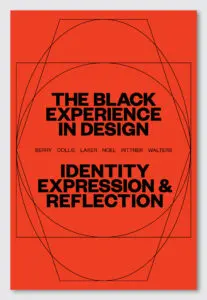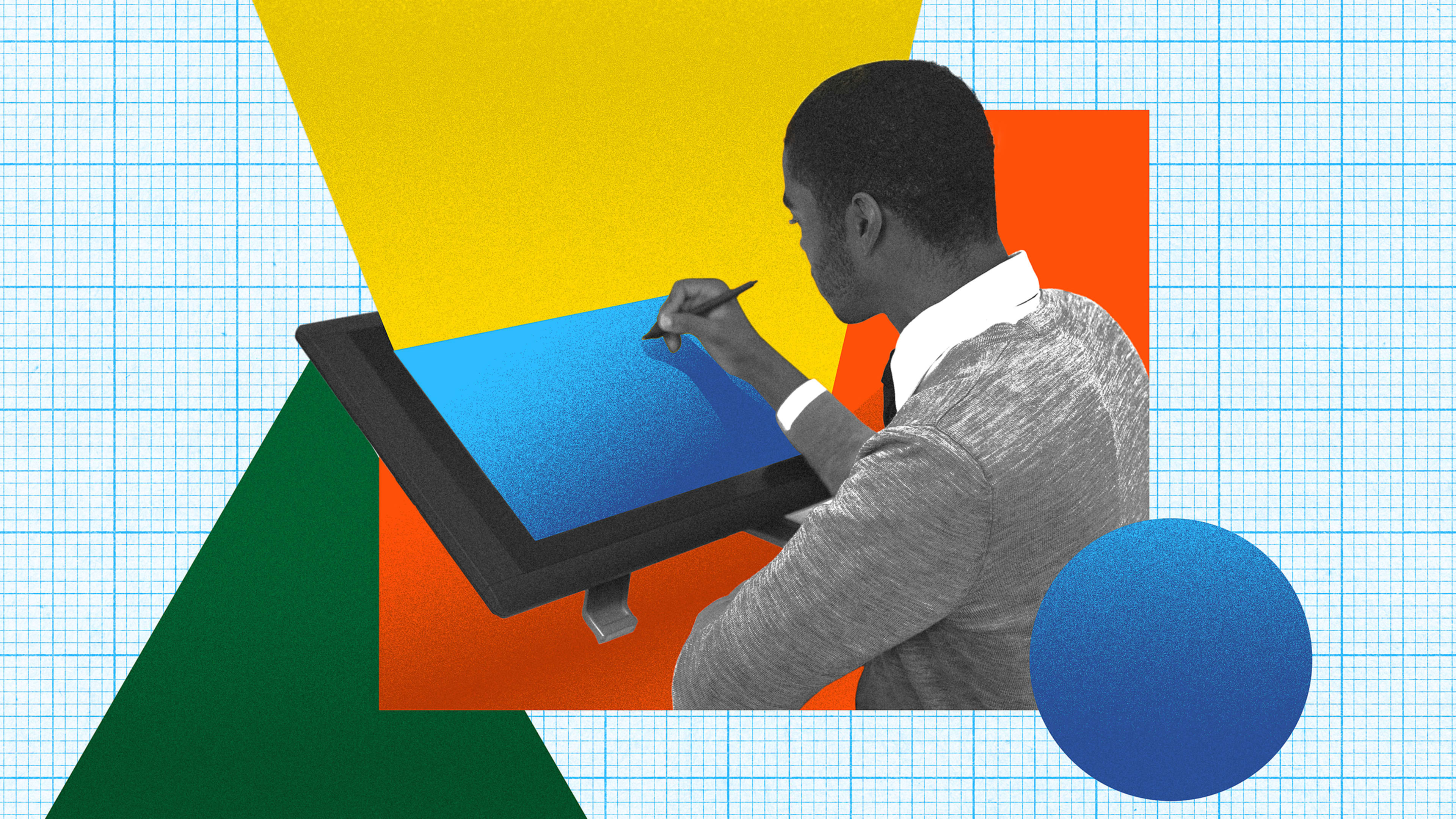Today, 3% of professional designers identify as Black. Compare this figure to the 13% population estimate for African Americans from the most recent U.S. Census. We observe a broken mirror.

Rising to meet this promise of a fully realized profession is an exercise in fundamentally recalibrating it. Too many companies still uphold a scarcity argument relative to talent acquisition. Earnest actions must extend beyond incrementalism and the tallying of mere percentages. A goal is to pursue a new normal, one in which a single, colorless beam becomes prismatic. And for that, a new mechanism altogether is needed.
I’m writing from a specific vantage point—that of my own lived experience as a Black professional designer working in the United States. I am advocating for a prismatic outcome as it transcends notions of the provider and the beneficiary, sun and shade. It is not assumptive of a future space of white-centeredness. It is brilliance, in the form of a distinct and harmonious spectrum of voices, perspectives, abilities, and histories.
Four anchor points drive this path forward. First, young and impressionable Black minds must see themselves within the profession. Demonstrated by role models, it is a career trajectory that can then be mapped and emulated. Second, art education needs to surface and alleviate structural, cultural, and economic impediments to pursuing design as a course of study. It must open the gates and support viable paths to graduation. Third, companies must aspire to create prismatic cultures. Hiring can only defy tokenism when spaces are inclusive—welcoming authentic selves into the workplace, and setting candidates up for success. Lastly, a supportive professional lattice creates a resilient workforce and introduces new talent and networks into the field.
Seeing yourself in design
In 2020, the absence of viable career cultivation strategies for Black designers was pronounced as our foundational reality was irrevocably shaken. We experienced our collective livelihoods set against the incendiary backdrop of a global civil rights movement and the COVID-19 pandemic. So much brokenness was visible.
While representational advocates were visible across sports and entertainment, Black design professionals were conspicuously absent. This led Mitzi Okou to found Where Are the Black Designers? along with Garrett Albury to promote diversity and equity, and to hold perennial design consultancies and in-house studios accountable for their complicity in amplifying a host of deleterious forces. They sought to make visible the Black designers in question, realizing that in 2020, representation had never been more vital to morale. Peering into deep professional fissures, we can imagine pathways for urgent remediation, and ultimately the redemption of the field. After all, the cracks are how the light gets in.
Two bright precedents highlight programmatic solutions and interventions for Black youth seeking entrée into the design profession. In Toronto, Dr. Elizabeth “Dori” Tunstall, the world’s first Black dean of a design school at Ontario College of Art and Design University (OCAD), set up a mentorship program called Blackreach. It provides a four-week summer design intensive for Black youth; attendees aged 8 to 12 years are tutored on aesthetics and portfolio preparation. After all, Black students cannot gain admission into an art school without a portfolio. And if the student’s high school does not offer AP Art or Architecture, in this vacuum how could we expect an inspired portfolio to emerge?
In New York City, under the visionary leadership of Caroline Baumann, the Cooper Hewitt, Smithsonian Design Museum initiated the first annual Teen Design Fair, where design-enthralled teens could talk with top Black and other designers working in the fields of fashion, product design, architecture, and graphic design. Such exposure and access were valuable reminders that most designers are not public figures; their work does not usually signal Black authorship.
Both programs address, in different ways, opportunities for representational imprinting. Black youth can see themselves in Black faculty or professional mentors, better understand the bread crumbs toward success in their respective fields, and receive assistance and emotional support in preparing requisite materials for passage into the next stage of their journey—art school education.
Excelling in design school
Art schools, the purveyors of design degrees, have long been equated with elite pursuits. With some schools listing annual tuition above $70,000, the risk-reward calculation is almost untenable for those whose parents cannot foot such a bill. As art schools often are tuition dependent in order to pay faculty and provide world-class facilities, they typically can’t offer equivalent access to the best and brightest talent. Class asymmetries begin to dominate the dynamics of matriculation.
While more affordable and culturally supportive environments exist for Black, Brown, and Indigenous students in Historically Black Colleges and Universities (HBCUs), Hispanic-serving institutions (HSIs), and Tribal Colleges and Universities (TCUs), many of these schools do not confer BFA degrees in graphic or industrial design.
In Cheryl D. Miller’s landmark Print article “Black Designers: Missing in Action,” she called out the fact that Black design students face the same challenges as their white peers—competition, accepting criticism, and asking questions with confidence. But additional pressures often prevail, including inadequate financial resources, limited guidance on navigating identity expressions and expanding the canon, and lack of emotional support from parents when pursuing a design education. For many Black students who are anticipating substantial student loan debt, coupled with parental skepticism of the merits of a nontraditional educational pathway, their work begins to suffer.
Even those with high school design portfolios superior to many of their incoming classmates, the work soon becomes preoccupied with being “professionally viable”—it exudes vocation over self-possession. Upon graduation, student loan debt and limited financial resources may rule out employment in vital metropolitan design hubs due to high costs of living. Those with stronger financial support may encounter a subtler and formidable barrier to entry—”cultural fit.”
Diversity as a creative advantage
Because graphic design, unlike architecture, lacks a licensing requirement, it is a profession dominated by networking and word-of-mouth referrals, and is thus particularly vulnerable to the compounding effects of cultural fit. This becomes immediately apparent for recent Black graduates who are often made to feel undesirable despite proof of academic rigor and success. Cultural fit, with its subsequent homogeneity, has become code for hermetically sealed white social contexts, including parental professional connections and art school alumni networks.
If professional design cultures are homogenous, they are not diverse. If they are diverse, they are often not inclusive. This inertia of tokenism remains un-braked, as optical diversity is much more comfortable than a sincere, systemic overhaul.
In contrast to token hires, companies aspiring to create prismatic cultures know that in order to manifest higher-performing products and visually divergent artifacts, diversity is an absolute prerequisite. Cognitively diverse teams—colleagues with divergent perspectives, ages, and physical abilities—statistically outperform homogenous teams ad infinitum.
In this respect, we must reframe “Diversity, Equity & Inclusion” from quotas and obligatory contracts to creative advantage. With a greater volume of aspiring designers with varied lived experiences and vantage points, the profession at large stands to benefit exponentially. As prismatic cultures emerge as a new normal in the workplaces of tomorrow, Black design professionals will at once be more visible and have greater agency to shape the ecosystems in which they operate. To pursue a prismatic workplace is to address diversity from the demand side—we want you—versus the supply side—you are counted, but not valued.
Building professional lattices
Lastly, a professional lattice can be formed between those designers who are able to traverse the precarious bridge from entry level to managerial stations. They are the representative role models that close the loop on the cycle of cultivation. Eschewing token roles, these designers are warriors within our profession, restructuring the field as they move through it. The lattice left in their wake offers lateral pathways to rising designers when glass ceilings are impeding their progress.
The momentary existential crisis of our profession has made certain assertions abundantly clear. It exposed many models to be fundamentally flawed—such as talent scarcity arguments and standards bias rationales. The design profession benefits from plenitude. The untapped potential for the American design profession at large then lies in the cultural capital of its increasingly diverse population.
If China’s technological ascent was predicated largely on population scale and density, then America should see population diversity as its vital asset. The majority minority may be the catalyst for a new era of economic prosperity, free from the constraints of historical inertia. A profession, as a whole, becomes prismatic.
Recognize your brand’s excellence by applying to this year’s Brands That Matter Awards before the early-rate deadline, May 3.
